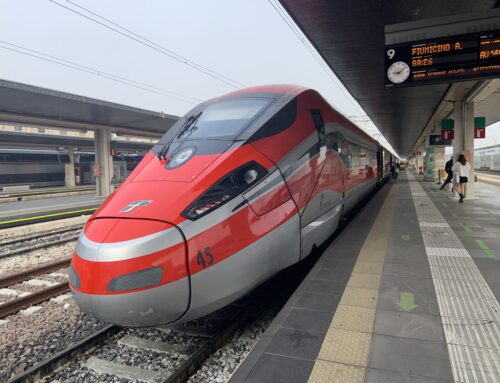One of my colleagues in our “P3 Collaborative” is Frank Russo, an innovator for over 3 decades in improving project delivery for large rail and bus rapid transit projects in the U.S. and Canada. Here are some of his thoughts on enduring principles for accelerating transit project delivery that are useful guidelines for our upcoming much needed infrastructure investment. I am sure you will get something out of it. Best, Chris
Introduction:
The average duration of a medium to large project funded through Federal Agencies is approaching 20 years. All projects, large and small, begin with an analysis of alternatives and definition of the project, followed by an environmental review, then preliminary engineering, detailed design, and finally construction. Each of these 5 phases is accompanied by its own funding cycle and a cycle for the procurement of services. Funding applications/approvals and procurement cycles can add up to “years” where no real project activity is taking place, and sometimes result in a “do loop” where work needs to be done again as regulations, environmental conditions or economic conditions change over time. The construction phase, typically 3 to 5 years, is generally one of the shorter project activities and usually represents less than half the total project cost. Just as importantly, final costs aren’t known until construction contracts are awarded, which comes very late in the process.
Streamlining opportunities:
Reduce federal involvement: Reduce regulatory requirements by eliminating the federal government’s involvement in small to medium sized projects. The federal government’s involvement is built on federal funding and federal environmental standards. But the source of money is the same (the taxpayers) and states have environmental policies that mimic federal standards and are better suited to smaller projects.
- Allow states and municipalities to keep their money at home and fund their projects locally: This will eliminate the time required for multiple funding applications and all of the associated administration.
- Eliminate federal oversight of local projects that have little regional impact: This will eliminate federal environmental review (a time consuming, expensive and complex process) and replace it with state and local standards. It will also allow local governments to procure and manage work in ways that are familiar to them, and this will result in more small and local businesses as primary service providers.
- Reduce federal involvement in projects with regional impacts: Cities and states have the ability to coordinate every element of a project, from the initial stages of planning to the coordination of construction. Receiving federal funds should not necessarily result in federal management practices and federal oversight.
Improve federal processes to shorten schedules: In medium to large projects the cumulative impact of funding application cycles, federal review cycles and procurement cycles can be 5 years or more. Even when federal funding and oversight is required, the time line to deliver projects can be shortened.
- Allow certain elements of environmental review and the procurement of engineering and construction services to advance simultaneously: This will shorten overall project schedules significantly and reduce total costs. It will also reduce the impact of changes in economic conditions. Most importantly, it will allow projects to be delivered in a time frame that’s reasonable to the community that agreed to pay for them.
- Encourage project development agreements: Federal agencies typically assume the role of project “owner” and treat the local sponsor as a “contractor” carrying out the federal government’s business. Along with funding comes a host of requirements that the local implementing agency must live up to. But there is little that binds the federal agencies to their responsibilities. Federal funding, review and oversight agencies should enter into agreements with the local sponsors that commit to firm dates for the review of submittals and the release of funding. This will eliminate the “arms-length” relationship that exists today and encourage a more cooperative (partnership) relationship to advance larger and more important projects.
Encourage more efficient business models for large projects of national importance: Projects of national importance ensure health, safety, and commerce at the regional or national level. They may include access to water (dams and feeder pipelines), major energy projects, major bridges and tunnels, seaports and airports, the national transportation network (both the interstate system and freight rail system) and passenger rail systems. By definition, any project that takes 20 years to advance from concept to completion cannot be “important”. More efficient business models can be used to cut schedules by half and reduce total costs by nearly as much.
- Consider forms of Public Private Partnerships (PPP) to reduce the cost, schedule and risk of large, complex projects: These contract types include “Design-Build-Operate-Maintain” (DBOM) contracts, “Design-Build-Operate-Maintain-Finance” (DBOMF) contracts and true concession contracts that include private equity at risk. All of these business models offer similar advantages, including:
- Lower project development costs – Project development costs are limited to planning, conceptual engineering, and the development of a responsible project financial plan. The public sector avoids some of the traditional development costs associated with fee based professional services.
- Lower implementation costs – Projects are delivered through a single comprehensive agreement with a single point of responsibility for project performance. The integration, streamlining and consolidated management of all project activities results in significant cost savings.
- Shorter schedules – Activities like design, construction, equipment supply and finance are performed simultaneously resulting in much shorter schedules which also reduces the cost associated with the time value of money.
- Reduced risk – The private partner provides cost, schedule and performance guarantees. These guarantees take the form of “up front” commitments, and payment for work is tied to project performance. The private partner also assumes responsibility for managing contract interfaces and the integration of all work, greatly reducing the public partner’s exposure to claims and cost overruns.
- Private sector financing – Private sector financing can relieve projects from the cash flow restrictions normally associated with publicly funded projects.
- Private sector investment – Private equity can close funding gaps and provide access to new capital markets. Depending on the project, private equity may be invested “at risk” and tied to performance.
By Frank Russo, P.E.






Leave A Comment